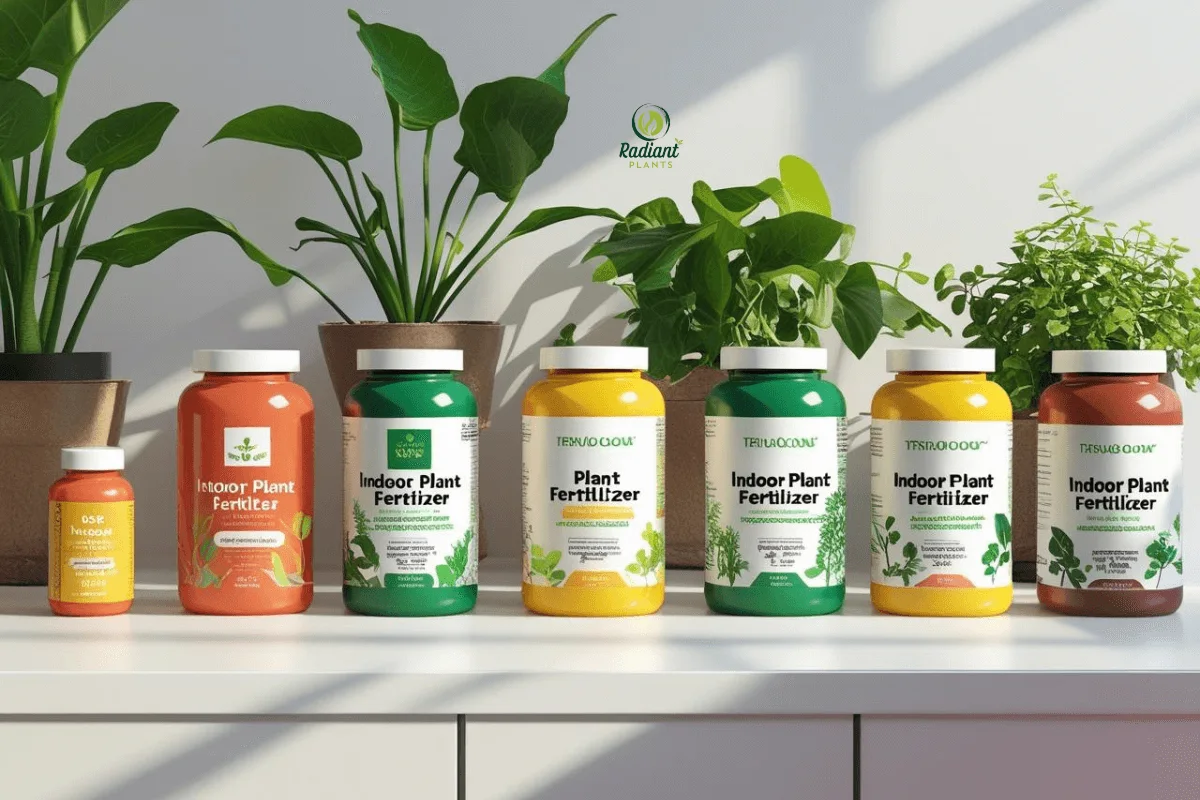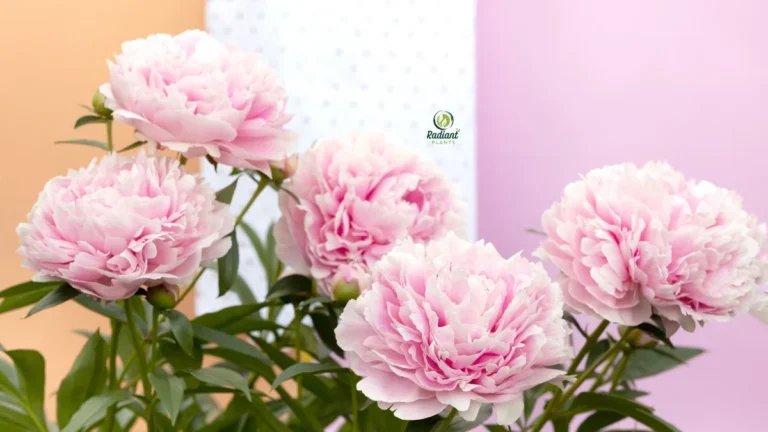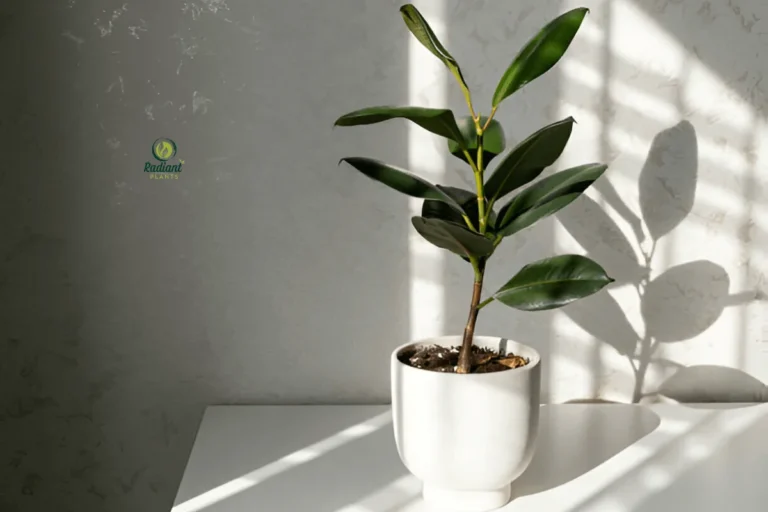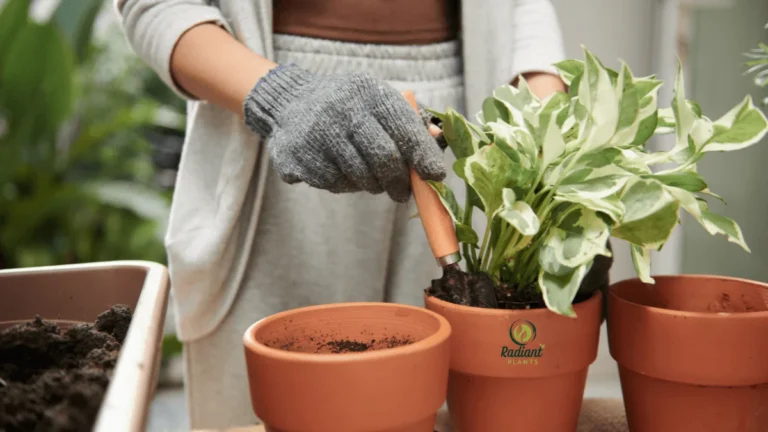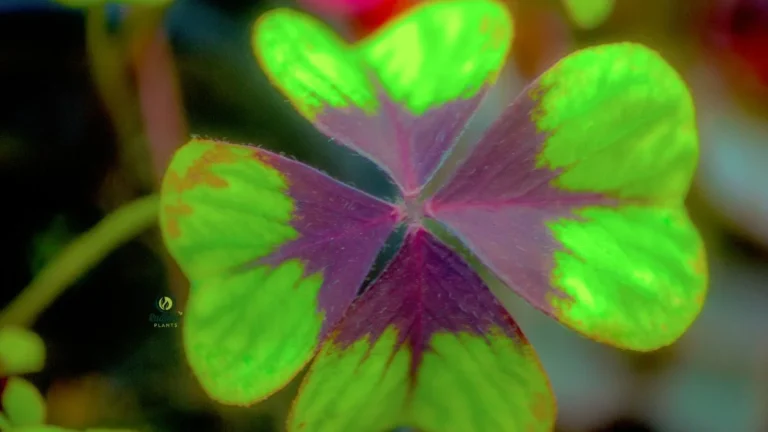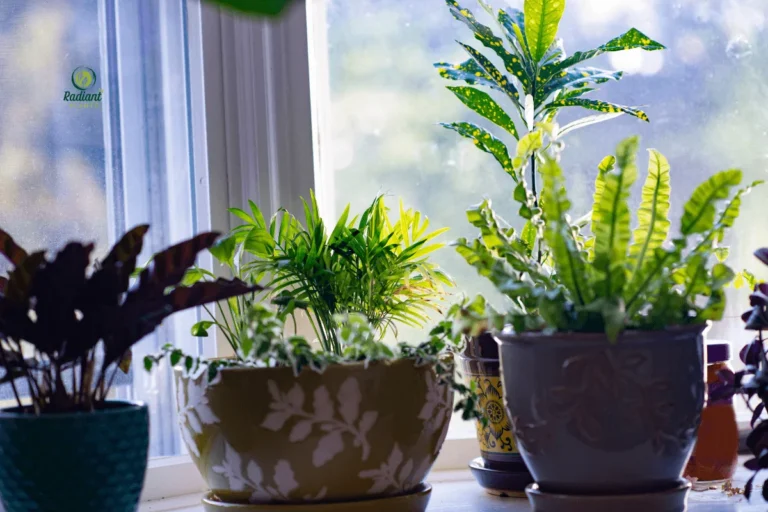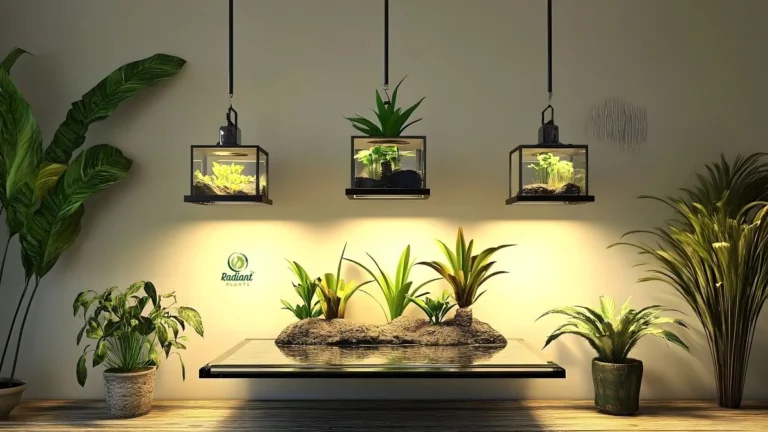Best Fertilizer for Indoor Plants: A Simple How-To Guide
The best fertilizer for indoor plants depends on the type of plant, but a balanced liquid fertilizer with equal N-P-K ratios (such as 10-10-10) is a great all-around choice. It’s easy to apply, quick to absorb, and supports healthy foliage, root development, and blooming. For low-maintenance care, slow-release pellets are also a popular and effective option.
Indoor plants don’t get the natural nutrients that outdoor soil provides, so regular feeding is essential for strong growth. Fertilizers tailored to specific needs—such as flowering, leafy, or succulent plants—can further optimize results.
In this guide, we’ll break down the different types of indoor plant fertilizers, how and when to apply them, common mistakes to avoid, and the top products to consider. Whether you’re a beginner or a plant pro, this simple how-to will help you feed your plants the right way.
Table of Contents
Table of Contents
Why Fertilizer Matters for Indoor Plants
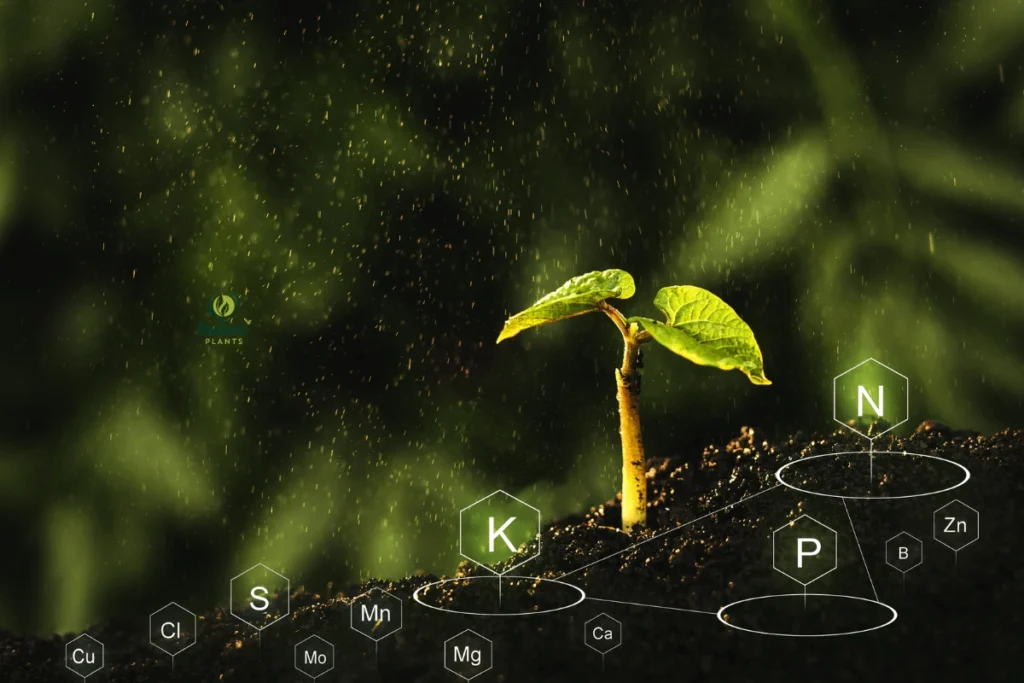
Indoor plants rely on you for all their nutrients. Unlike outdoor plants, they don’t get replenished soil or natural compost. Understanding the best fertilizer for indoor plants starts with knowing what nutrients they need—and when. A balanced, thoughtful feeding routine makes all the difference in their growth.
🌱 The Role of Nutrients: What Plants Need to Thrive
Plants require three essential macronutrients to grow strong and healthy:
Nutrient | Symbol | Function |
|---|---|---|
Nitrogen | N | Promotes leafy green growth |
Phosphorus | P | Supports strong roots and blooming |
Potassium | K | Boosts immunity and overall plant vigor |
These elements make up the familiar N-P-K ratio found on fertilizer labels (e.g., 10-10-10). A balanced mix helps houseplants develop lush foliage, sturdy stems, and vibrant flowers or fruits.
In addition to N-P-K, trace micronutrients like magnesium, calcium, and iron also play important roles. Deficiencies in these often show up as yellow leaves, poor growth, or discolored stems.
✅ Tip: A general-purpose indoor plant fertilizer with a balanced or slightly nitrogen-rich ratio is ideal for most foliage plants. Flowering plants may benefit from a slightly higher phosphorus level (e.g., 10-15-10).
🪴 Indoor vs. Outdoor Nutrient Cycles: Key Differences
Unlike outdoor plants, indoor plants live in closed systems, which means their soil doesn’t naturally replenish. There are no earthworms, rainwater minerals, or decaying organic matter to restore nutrients over time.
Outdoor Environment Offers:
- Organic matter breakdown
- Microbial activity
- Seasonal top-ups via compost and rain
Indoor Plants Get:
- Limited nutrients locked in a pot
- No nutrient recycling unless you fertilize
- Salt buildup and nutrient depletion over time
This difference is why regular feeding is critical. Without intervention, your houseplants will slowly exhaust the nutrients in their soil. Even high-quality potting mixes lose fertility after 1–2 months.
🌿 Understanding the best fertilizer for indoor plants starts with knowing what they need—and recognizing they won’t get it unless you provide it.
💡 Signs Your Plant Needs Fertilizer
Here are some common symptoms that your indoor plants might be underfed:
- Slow growth despite proper lighting and watering
- Pale or yellowing leaves (especially lower ones)
- Weak stems or poor flowering
- Spots or browning on leaf edges
- Soil looks tired or compacted
If your plant shows any of these, it may be time for a fertilizer boost.
🌸 Tailoring Nutrition to the Plant Type
Not all houseplants have the same nutrient needs. For example:
Plant Type | Ideal Fertilizer Type | Notes |
|---|---|---|
Foliage plants | Balanced (10-10-10) | Focus on green growth |
Flowering plants | Higher phosphorus (e.g., 10-15-10) | Boost blooming |
Succulents/Cacti | Low nitrogen, slow-release | Avoid overfeeding |
Orchids | Orchid-specific blends | Gentle formulas with micronutrients |
Knowing the plant’s natural environment helps inform how often—and how much—you should feed it.
🧪 Overfeeding: When Fertilizer Becomes Harmful
Too much of a good thing can backfire. Overfertilizing is a common mistake, especially when using concentrated liquid formulas.
Risks of overfeeding include:
- Fertilizer burn (brown tips)
- Salt buildup in soil
- Root damage
- Disrupted nutrient absorption
💧 Always follow label instructions and consider diluting liquid fertilizers to half strength, especially during winter when plant growth slows.
✅ Final Thoughts
Indoor plants depend on you for survival, and nutrition is a big part of that. Understanding how nutrients work and why indoor conditions create unique challenges helps you choose the best fertilizer for indoor plants with confidence. By giving your plants what they’re missing from nature, you create the conditions for vibrant, lasting growth.
Types of Indoor Plant Fertilizers Explained
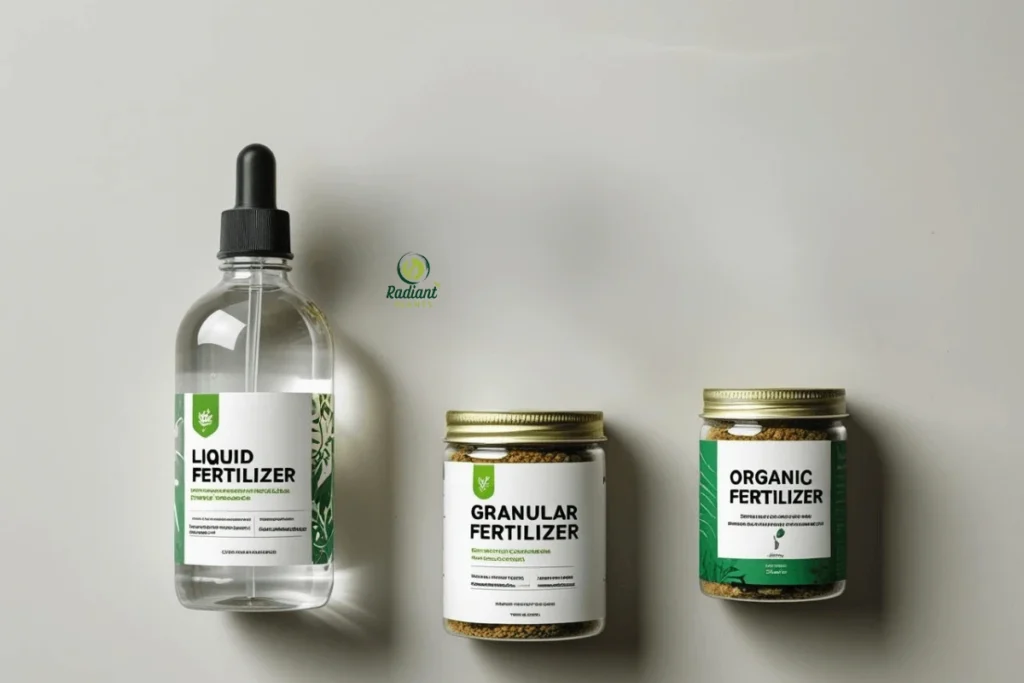
The best fertilizer for indoor plants depends on how your plants grow and how much time you have to care for them. Liquid, granular, and organic options each offer unique benefits. Choosing the right type ensures better absorption, less waste, and healthier houseplants year-round.
Indoor plants need consistent feeding, but not every fertilizer works the same way. To find the best fertilizer for indoor plants, you’ll need to understand the differences between liquid, granular, and organic vs. synthetic fertilizers. Each has its pros, cons, and ideal use cases.
Let’s explore the main types to help you choose the best fit for your plant collection.
💧 Liquid Fertilizers
Liquid fertilizers are among the most popular choices for indoor plant owners—and for good reason. They’re typically concentrated solutions that you dilute with water and apply during regular watering.
✔ Pros:
- Rapid absorption through roots and leaves
- Easy to control dosage
- Ideal for regular feeding schedules
- Works well for hydroponic setups or semi-hydro plants
✖ Cons:
- Needs frequent reapplication (every 1–2 weeks)
- Risk of overfeeding if not diluted properly
- May leave salt residue in the soil over time
Best for:
- Tropical houseplants, herbs, and fast-growing greenery like pothos, philodendrons, and ferns.
💡 LSI keyword tip: Liquid plant food is a common term used interchangeably with liquid fertilizer—look for it on product labels.
🌾 Granular and Slow-Release Fertilizers
Granular fertilizers come in the form of dry pellets or beads that you mix into the soil. Slow-release versions are coated to break down over weeks or months, providing nutrients over time with minimal effort.
✔ Pros:
- Long-lasting (can feed for 1–3 months)
- Lower risk of overfertilizing
- Great for busy plant parents
✖ Cons:
- Nutrient release is slower and temperature-dependent
- Harder to adjust the dosage or stop feeding
- Not ideal for plants needing immediate care
Best for:
- Low-maintenance plants like succulents, snake plants, or ZZ plants. Also ideal for forgetful plant owners.
🌱 Bonus: Some slow-release fertilizers are formulated with micronutrients and beneficial microbes for soil enrichment.
🌿 Organic vs. Synthetic Fertilizers
Another key decision: whether to go organic or synthetic. This choice affects not just your plants, but also your home environment.
Organic Fertilizers:
- Derived from natural sources (compost, fish emulsion, worm castings)
- Improve soil structure over time
- Gentler, less risk of chemical burn
- Often smellier and slower to act
Synthetic Fertilizers:
- Chemically manufactured for precise NPK ratios
- Fast-acting and consistent
- Often cheaper and easier to find
- May cause salt buildup or soil imbalance with overuse
Best for:
- Organic: Eco-conscious plant owners, edible indoor gardens, long-term soil health
- Synthetic: Quick results, controlled feeding for fast growers
🌼 LSI keywords: Organic fertilizer for indoor plants, chemical plant food
📊 Comparison Table: Types of Indoor Plant Fertilizers
Type | Pros | Cons | Best For |
|---|---|---|---|
Liquid | Fast absorption, easy to apply | Needs frequent dosing | Tropical houseplants, herbs |
Granular | Simple, long-lasting | Slow results, less control | Busy plant parents, succulents |
Slow-Release | Steady feeding, low maintenance | Not ideal for urgent nutrient boosts | Foliage plants, beginner gardeners |
Organic | Natural, safe, improves soil | Smelly, slower effects | Eco-conscious homes, edibles |
Synthetic | Precise, fast results | May cause buildup with overuse | Quick fixes, vigorous growers |
📌 Choosing the best fertilizer for indoor plants begins with selecting the right type—and matching it to your plant’s lifestyle and your care routine.
✅ Final Notes
Whether you’re growing a lush Monstera or a humble spider plant, using the right type of fertilizer is just as important as how often you apply it. Each option—liquid, granular, organic, or synthetic—serves a purpose, and understanding their strengths will help your plants thrive year-round.
7 Best Fertilizers for Indoor Plants (Reviewed)

The best fertilizer for indoor plants varies by plant type, but top-rated options include balanced liquids, organic blends, and slow-release pellets. Each offers unique benefits for leafy greens, flowering plants, or succulents—choosing the right one helps ensure healthy, vibrant growth all year round.
Finding the best fertilizer for indoor plants can be overwhelming with so many products available. To simplify your search, here’s a curated list of 7 highly regarded fertilizers. Each option is selected based on NPK balance, plant compatibility, and ease of use, not brand hype. This review is educational and product-neutral.
✅ Quick Comparison Table
Easy-to-use organic capsules | Type | NPK Ratio | Ideal For | Key Benefit |
|---|---|---|---|---|
Jack’s Classic 20-20-20 | Liquid | 20-20-20 | Leafy houseplants | Balanced nutrients for foliage |
Espoma Indoor! | Liquid Organic | 2-2-2 | Herbs, tropical plants | Gentle, pet-safe formula |
Osmocote Smart-Release | Slow-Release | 15-9-12 | Low-maintenance setups | Feeds for up to 6 months |
Schultz Liquid Plant Food | Liquid | 10-15-10 | Flowering houseplants | Boosts blooming performance |
EarthPods Plant Food | Organic Capsule | N/A | Orchids, peace lilies | Easy-use organic capsules |
Miracle-Gro Indoor | Liquid | 1-1-1 | Beginners, general use | Low-risk, balanced feed |
Dr. Earth House Plant | Organic Granule | 4-4-4 | Long-term soil health | Builds soil microbes |
🌿 1. Jack’s Classic 20-20-20 All Purpose Fertilizer
- Type: Liquid concentrate
- NPK: 20-20-20
- Best for: Fast-growing, leafy indoor plants
- Why it works: A well-balanced formula that supports overall plant health. It’s especially great for foliage-heavy varieties like pothos and philodendron.
- Use tip: Apply every 1–2 weeks during active growth.
🌱 2. Espoma Organic Indoor! Houseplant Food
- Type: Liquid organic
- NPK: 2-2-2
- Best for: Herbs, small tropical plants, sensitive species
- Why it works: A gentle, pet-safe, and sustainable option that won’t overwhelm delicate roots. Contains beneficial microbes to improve soil health.
- Use tip: Use monthly or bi-weekly for low-risk feeding.
🌼 3. Osmocote Smart-Release Plant Food
- Type: Slow-release granules
- NPK: 15-9-12
- Best for: Succulents, snake plants, ZZ plants
- Why it works: Releases nutrients gradually based on soil temperature and moisture. Minimal effort with long-lasting results.
- Use tip: Apply once every 4–6 months.
🌸 4. Schultz Liquid Plant Food Plus
- Type: Liquid
- NPK: 10-15-10
- Best for: Flowering plants like African violets, begonias
- Why it works: High phosphorus encourages blooming and strong root development. Great for seasonal flowering houseplants.
- Use tip: Use weekly when plants are in bloom.
🌺 5. EarthPods Premium Indoor Plant Food
- Type: Organic capsule
- NPK: Not specified (slow-release blend)
- Best for: Orchids, peace lilies, and flowering foliage
- Why it works: Pre-measured, mess-free pods that are easy to apply. Organic ingredients support long-term health.
- Use tip: Insert one pod per plant every 2–3 weeks.
🌾 6. Miracle-Gro Indoor Plant Food
- Type: Liquid
- NPK: 1-1-1
- Best for: Beginners, general indoor plant care
- Why it works: Balanced and forgiving formula that won’t burn roots. Quick results with minimal risk of overfeeding.
- Use tip: Apply directly to soil or mix with water every 1–2 weeks.
🌿 7. Dr. Earth House Plant Fertilizer
- Type: Organic granules
- NPK: 4-4-4
- Best for: Long-term care, eco-conscious growers
- Why it works: Uses sustainably sourced ingredients with beneficial microbes. Builds healthy soil while feeding plants naturally.
- Use tip: Mix into topsoil every 6–8 weeks.
🧠 Choosing the Right Fertilizer for Your Plants
Not all fertilizers are created equal. The best fertilizer for indoor plants ultimately depends on what you’re growing and how hands-on you want to be with the process.
- For flowering plants, opt for higher phosphorus levels.
- For succulents, opt for slow-release or low-nitrogen options.
- For general leafy plants, a balanced NPK is best.
Remember to check whether your choice is organic or synthetic, and always follow the recommended dosage to avoid overfeeding.
Best Fertilizer For Indoor Plant – Happy Houseplants
How to Apply Fertilizer Step by Step
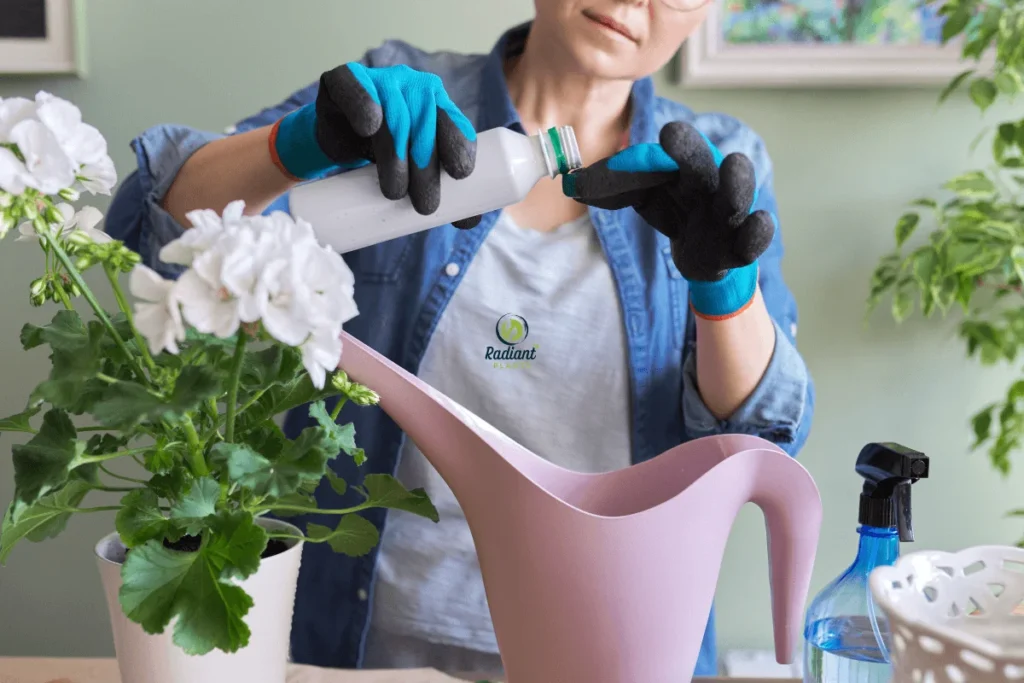
Applying the best fertilizer for indoor plants isn’t just about what you use—it’s how you use it. Correct dosage, timing, and technique are key to keeping your houseplants thriving without risking overfeeding or damage. Follow this simple step-by-step guide to fertilize with confidence.
Fertilizing your indoor plants may seem straightforward, but using the wrong fertilizer can do more harm than good. Too much can lead to salt buildup and leaf burn, while too little leaves your plants undernourished. Below, we’ll walk you through choosing the right dosage, how often to apply it, and how to avoid common mistakes.
🌿Choosing the Right Dosage
Before anything else, always read the label. Fertilizer concentrations vary, especially between liquid, granular, and slow-release types. The label will usually include dilution instructions or scoop measurements. But here are some general rules:
- Liquid fertilizers should often be diluted to half strength for indoor use. Less is more, especially in cooler months.
- Granular or pellet fertilizers are pre-measured, but still follow guidelines based on pot size.
- Organic fertilizers are gentler but still shouldn’t be over-applied.
💡 A good tip: Start with less than recommended, especially with new or sensitive plants. You can always feed more—but you can’t undo a burn.
📆 Application Frequency by Plant Type
Different plants have different feeding needs. Here’s a quick-reference table for how often to fertilize common indoor plant types:
📊 Fertilizer Frequency Table
Plant Type | Frequency | Notes |
|---|---|---|
Succulents | Every 4–6 weeks | Use diluted strength |
Ferns | Every 2–3 weeks | Avoid overwatering |
Flowering Plants | Every 2 weeks | Feed during bloom cycles |
Foliage Plants | Every 3–4 weeks | Use balanced fertilizer |
Orchids | Monthly | Use orchid-specific blends |
📌 Remember: Growth slows in winter, so cut back fertilizing to once every 6–8 weeks—or stop entirely—unless your plant is actively growing under grow lights.
⚠️ Common Fertilizing Mistakes to Avoid
Even when using the best fertilizer for indoor plants, mistakes can lead to unhealthy roots, stunted growth, or even plant death. Keep an eye out for these common errors:
- Overfeeding: More is not better. Excess fertilizer causes salt buildup, root burn, and discolored leaves.
- Feeding dry soil: Always water your plant first before applying liquid fertilizer. Fertilizer on dry roots increases the risk of damage.
- Ignoring seasons: Plants grow faster in spring/summer and slow down in fall/winter. Adjust feeding accordingly.
- Wrong type for the plant: For example, don’t use high-nitrogen fertilizer on flowering plants—it may encourage leaf growth over blooms.
🧪 Pro tip: If you notice white crust on the soil surface, it’s likely a salt buildup. Flush the pot with water and pause fertilizing for a couple of weeks.
💧 Application Tips by Fertilizer Type
- Liquid Fertilizer:
- Mix with water as directed
- Apply during regular watering
- Use a catch tray to avoid runoff damage
- Granular or Slow-Release Fertilizer:
- Sprinkle evenly around the base
- Lightly mix into the top layer of soil
- Water immediately after application
- Organic Fertilizer:
- Follow product-specific instructions (some need composting time)
- Use less often due to slow breakdown
✅ Final Thoughts
Fertilizing isn’t just about choosing the best fertilizer for indoor plants—it’s about applying it at the right time, in the right way, and in the right amount. With a bit of care and consistency, you’ll support lush growth, vibrant leaves, and a happy indoor jungle that thrives year-round.
Common Fertilizing Mistakes and How to Avoid Them
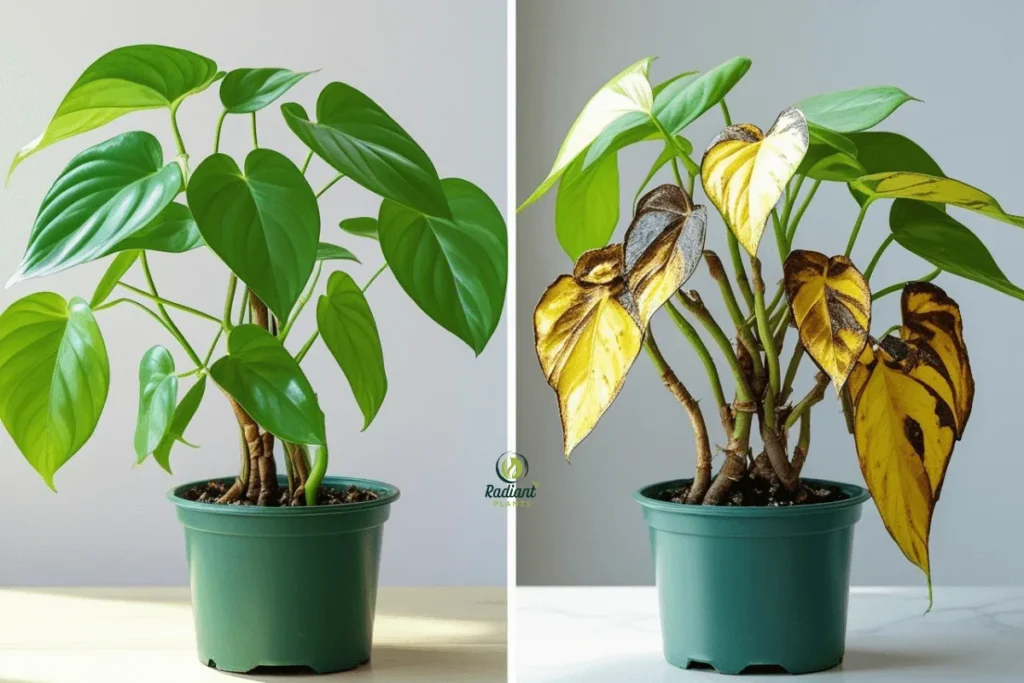
Even the best fertilizer for indoor plants won’t work if misused. Overfeeding, poor timing, or the wrong product can harm your plants instead of helping them. Avoiding a few common errors can make a big difference in plant health, especially in small pots with limited soil.
Fertilizing your houseplants is essential for growth, but even the best fertilizer for indoor plants won’t work if misused. Many plant owners unintentionally harm their plants by overfeeding, using the wrong type, or applying it at the wrong time.
Let’s look at the most frequent fertilizing mistakes—and how to steer clear of them.
⚠️ 1. Overfertilizing
This is the most common mistake. Adding more fertilizer doesn’t mean faster growth—in fact, it can burn the roots, cause leaf browning, and lead to salt buildup in the soil.
Signs of overfeeding include:
- Crispy, brown leaf tips
- White crust forming on the soil surface
- Sudden leaf drop
- Stunted growth despite proper watering
💧 Fix: Flush the soil with plain water to leach out excess salts. Pause fertilizing for 2–3 weeks.
🧪 2. Feeding Too Frequently
Even with diluted liquid plant food, feeding too often can overload the soil and cause nutrient lockout—a condition where too much of one mineral prevents others from being absorbed.
Avoid:
- Weekly feeding unless clearly stated on the product
- Ignoring seasonal growth cycles (e.g., feeding aggressively in winter)
🌱 Tip: Most indoor plants do well with feeding every 2–4 weeks during the growing season and less during dormancy.
❌ 3. Fertilizing Dry Soil
Fertilizing dry soil can shock or burn roots, especially with liquid or synthetic products. Think of it like pouring concentrated juice on a sponge that hasn’t been soaked—it’s harsh and uneven.
✅ Always water your plant first, wait 15–30 minutes, then apply fertilizer.
📉 4. Using the Wrong Fertilizer Type
All fertilizers are not created equal. Using high-nitrogen fertilizer on a flowering plant can result in plenty of leaves but no blooms. Likewise, using heavy synthetic fertilizer on a cactus can cause root rot.
Examples:
- Succulents: Prefer low-nitrogen, slow-release types
- Flowering plants: Need phosphorus-rich blends
- Orchids: Require gentle, diluted orchid-specific food
💡 Choosing the best fertilizer for indoor plants means matching it to the plant’s actual needs, not just grabbing the first bottle you see.
🧂 5. Ignoring Salt Buildup and Soil Health
Synthetic and even some organic fertilizers can leave behind salts over time. These accumulate at the surface or within the root zone and can inhibit water and nutrient uptake.
Watch for:
- White powder on the soil
- Water runs straight through without absorption
- Plants “stalling” in growth
🧴 Solution: Leach your plant’s soil every 2–3 months by watering thoroughly and letting excess drain out completely.
📝 Do’s and Don’ts Cheat Sheet
✅ Do’s:
- ✔ Read the label for dosage and timing
- ✔ Dilute liquid fertilizers unless stated otherwise
- ✔ Match fertilizer type to plant needs
- ✔ Adjust feeding for seasons (less in winter)
- ✔ Flush the soil every few months to remove salt
🚫 Don’ts:
- ✖ Don’t fertilize dry soil
- ✖ Don’t feed sick or stressed plants
- ✖ Don’t overfeed to “speed up” growth
- ✖ Don’t use outdoor plant fertilizers indoors
- ✖ Don’t forget to clean up spills—residue attracts pests
✅ Final Thoughts
Fertilizer is a powerful tool, but only when used wisely. Even the best fertilizer for indoor plants won’t help if applied too often, too heavily, or at the wrong time. With a bit of attention and care, you can avoid common pitfalls and keep your plants happy, balanced, and thriving.
FAQs About the best fertilizer for indoor plants
The best fertilizer for indoor plants depends on plant type and care routine. This FAQ section answers common questions about flowering fertilizers, DIY options, safety for pets, and how often to feed. Get quick, clear answers to grow healthier, greener plants with confidence.
Even after choosing the best fertilizer for indoor plants, questions often arise, especially for new plant parents. From homemade options to pet safety, this FAQ section tackles common concerns to help you fertilize wisely and safely.
❓ What is the best fertilizer for flowering indoor plants?
Flowering houseplants thrive with a phosphorus-rich blend (e.g., 10‑15‑10) or bloom booster. These formulas fuel vibrant blooms and strong roots, ideal when using the best fertilizer for indoor plants focused on flowering varieties.
❓ How often should I fertilize indoor plants?
Feed leafy plants every 3–4 weeks, flowering types every 2–3 weeks, and succulents every 4–6 weeks. Adjust frequency during dormancy to avoid nutrient buildup. Even the best fertilizer for indoor plants needs a proper schedule to work effectively.
❓ Can I make homemade fertilizer for indoor plants?
Yes—DIY options like diluted coffee grounds, banana-peel tea, or aquarium water can supplement plant nutrition. But homemade blends lack consistent N-P-K ratios, so they work best paired with the best fertilizer for indoor plants rather than replacing it entirely.
❓ Can fertilizer harm pets?
Yes—synthetic or strong fertilizer blends can be toxic to cats and dogs if ingested or inhaled. To minimize risk, opt for pet-safe organic plant food, secure fertilizer containers out of reach, and use soil covers.
Conclusion
Feeding your plants the right way doesn’t have to be complicated. By choosing the best fertilizer for indoor plants, applying it with care, and understanding your plant’s unique needs, you can promote vibrant leaves, stronger roots, and healthier growth year-round. Whether you prefer liquid, slow-release, or organic options, consistency and moderation are key.
Remember to match the fertilizer type to your plant family, follow proper dosing schedules, and avoid common mistakes like overfeeding or fertilizing dry soil. With a simple, informed routine, your indoor garden will reward you with lasting beauty and vitality.
🌿 Ready to grow your skills?
Explore more care tips, browse plant-specific guides, or dive into seasonal fertilizing routines to keep your green space thriving all year long.

